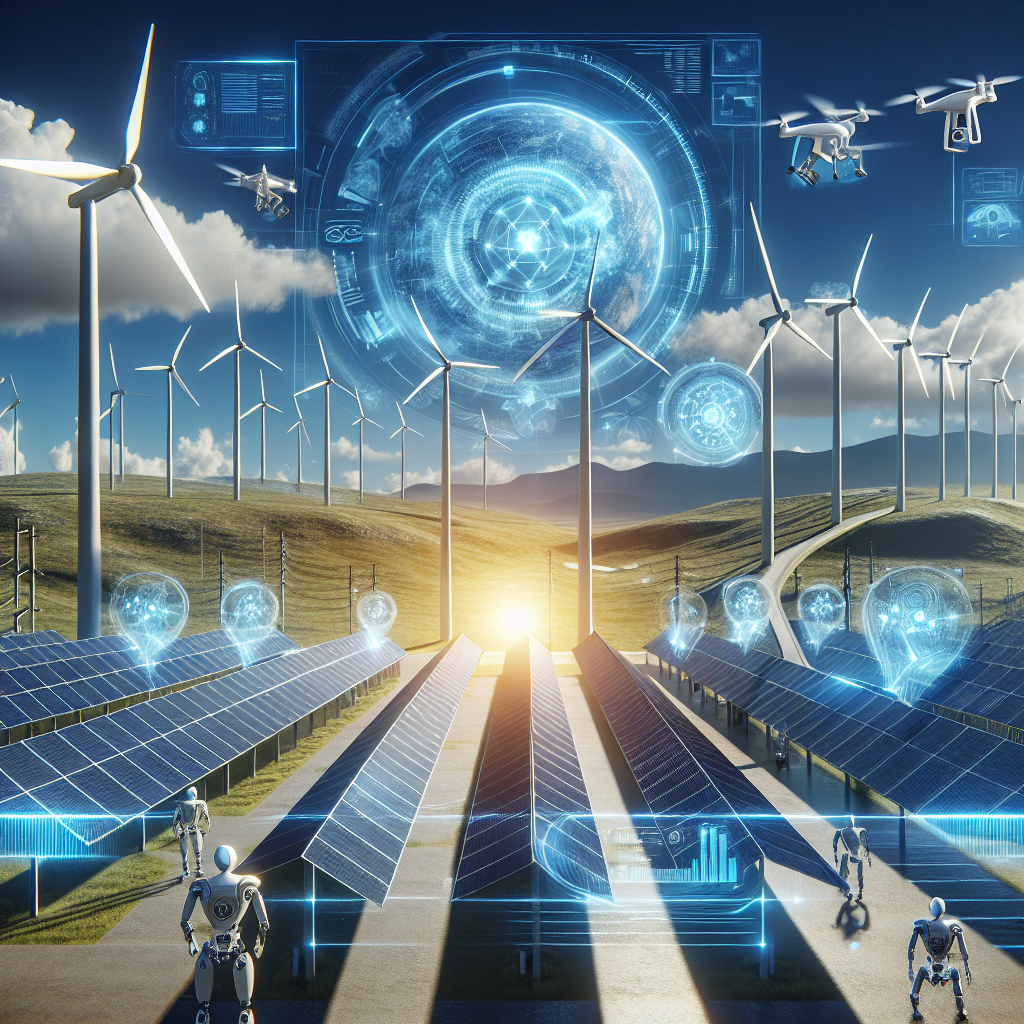The world is facing a critical challenge in the form of climate change, driven largely by the burning of fossil fuels for energy. As a result, there is an urgent need to transition to renewable energy sources such as solar, wind, and hydroelectric power. Monitoring and optimizing these renewable energy sources is crucial to ensuring their efficiency and effectiveness in reducing carbon emissions.
One of the key technologies that is poised to revolutionize the monitoring of renewable energy sources is artificial intelligence (AI). AI has the potential to transform the way we monitor and manage renewable energy sources, making them more efficient, reliable, and cost-effective. In this article, we will explore the future of renewable energy monitoring with AI and how it can help accelerate the transition to a sustainable energy future.
The Role of AI in Renewable Energy Monitoring
AI has the ability to analyze vast amounts of data in real-time, enabling it to optimize the performance of renewable energy sources. For example, AI algorithms can analyze weather patterns and other external factors to predict energy production from solar panels or wind turbines. This allows operators to adjust their systems accordingly to maximize energy output.
AI can also help detect and diagnose faults in renewable energy systems, enabling operators to address issues before they escalate into costly downtime. By using AI-powered predictive maintenance, operators can reduce maintenance costs and increase the reliability of their systems.
Furthermore, AI can optimize the integration of renewable energy sources into the grid, ensuring a stable and reliable energy supply. By analyzing data on energy consumption, weather patterns, and grid conditions, AI algorithms can optimize the distribution of energy from renewable sources, minimizing waste and maximizing efficiency.
Overall, AI has the potential to revolutionize the monitoring and management of renewable energy sources, making them more efficient, reliable, and cost-effective. By harnessing the power of AI, we can accelerate the transition to a sustainable energy future.
Challenges and Opportunities
While AI holds great promise for the monitoring of renewable energy sources, there are also challenges that need to be addressed. One of the key challenges is the lack of standardized data and communication protocols in the renewable energy sector. In order for AI algorithms to effectively analyze and optimize renewable energy systems, they need access to high-quality data from a variety of sources. Standardizing data formats and communication protocols will be crucial to unlocking the full potential of AI in renewable energy monitoring.
Another challenge is the complexity of renewable energy systems, which often consist of multiple components and subsystems that interact with each other in complex ways. AI algorithms need to be able to understand and model these interactions in order to optimize the performance of renewable energy systems. Developing AI algorithms that can effectively model the complexity of renewable energy systems will be a key research challenge in the coming years.
Despite these challenges, there are also significant opportunities for AI in renewable energy monitoring. For example, AI can help optimize the design and placement of renewable energy systems, maximizing their energy output and minimizing their environmental impact. By using AI to analyze data on factors such as weather patterns, topography, and energy consumption, operators can optimize the design and placement of renewable energy systems to maximize their efficiency.
AI can also help optimize the operation of renewable energy systems in real-time, adjusting their settings to respond to changes in energy demand or weather conditions. By using AI-powered control systems, operators can ensure that renewable energy systems operate at peak efficiency at all times, maximizing their energy output and reducing their environmental impact.
Overall, the future of renewable energy monitoring with AI is bright, with the potential to revolutionize the way we generate and consume energy. By harnessing the power of AI, we can accelerate the transition to a sustainable energy future and combat climate change.
FAQs
Q: How does AI help optimize the performance of renewable energy systems?
A: AI can analyze vast amounts of data in real-time to predict energy production from renewable sources, detect and diagnose faults in renewable energy systems, and optimize the integration of renewable energy sources into the grid. By using AI algorithms, operators can maximize the efficiency and reliability of renewable energy systems.
Q: What are some of the key challenges in using AI for renewable energy monitoring?
A: Some of the key challenges include the lack of standardized data and communication protocols in the renewable energy sector, as well as the complexity of renewable energy systems. Developing AI algorithms that can effectively model the complexity of renewable energy systems will be a key research challenge in the coming years.
Q: What are some of the opportunities for using AI in renewable energy monitoring?
A: AI can help optimize the design and placement of renewable energy systems, maximize their energy output, and minimize their environmental impact. AI can also help optimize the operation of renewable energy systems in real-time, adjusting their settings to respond to changes in energy demand or weather conditions.
Q: How can AI help accelerate the transition to a sustainable energy future?
A: By harnessing the power of AI, we can optimize the performance of renewable energy systems, making them more efficient, reliable, and cost-effective. This will help accelerate the transition to a sustainable energy future and combat climate change.

